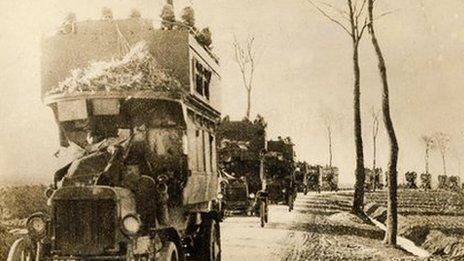Battle of the Somme: When London buses went from red to khaki
- Published

Battle buses took troops to France and Belgium. This wrecked one is pictured at St. Eloi, near Ypres, two weeks after leaving the garage in Willesden Green in 1914
Long before "battle buses" were used to shuttle campaigning politicians the length and breadth of the country, London buses commandeered for the war effort were used to transport troops to France in World War One.
Now, 100 years later, the London Transport Museum has sent one of the original battle buses - No. B2737 - across the channel to commemorate the centenary of the Battle of the Somme.
What's the story of the battle bus?

B-type buses, like this one going over Richmond Bridge in London, were refitted to carry troops

Some were used to transport troops to the front line, others were converted into ambulances
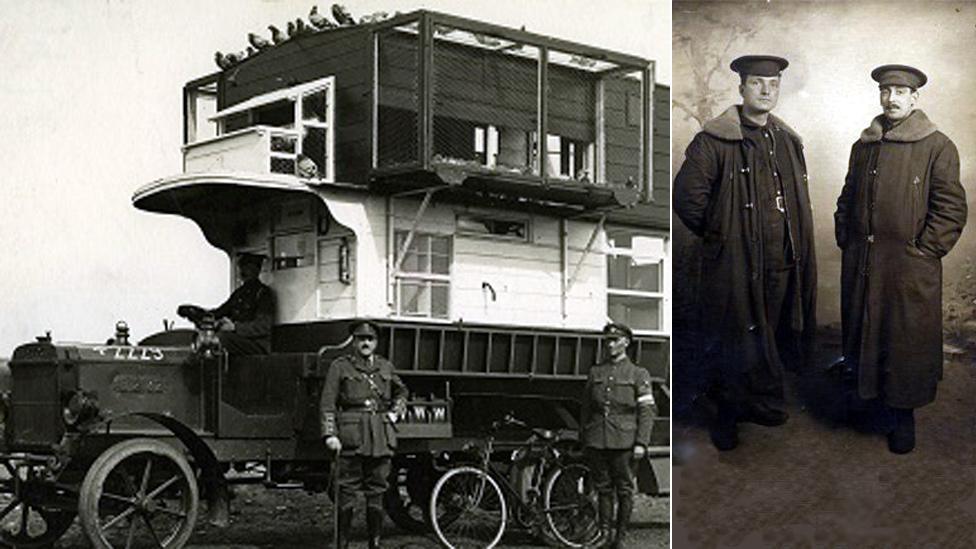
One B-type was converted into a pigeon loft. Civilian bus staff would often be commandeered along with their vehicles
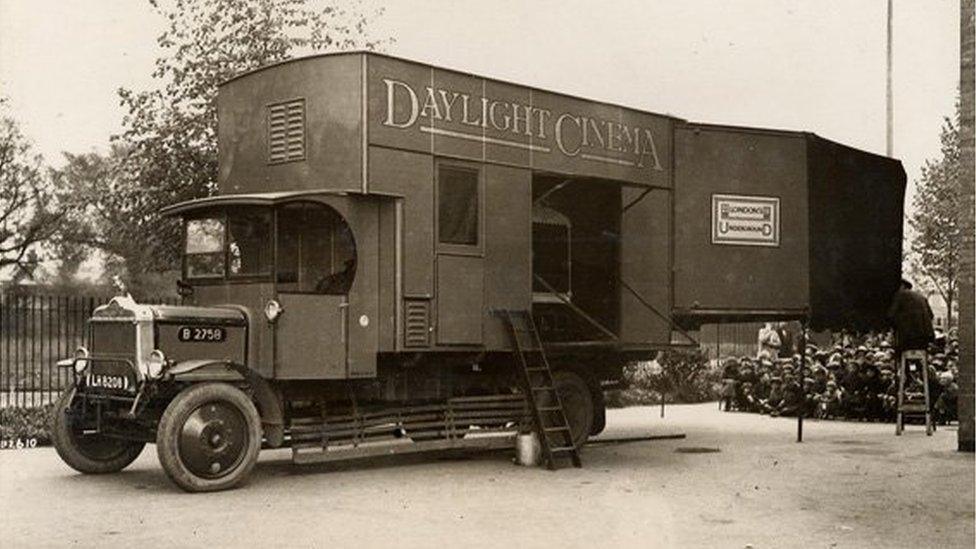
A touring cinema was fitted in this bus. It was driven around to show troops "appropriate and inspiring" films
Packed with men, the cheery red paint replaced by utilitarian khaki, and with the windows boarded over, the vehicles bore little resemblance to the omnibuses familiar to London.
When, in 1916, enlisted men boarded, it's unlikely they realised the ride would culminate in 141 days of horror, in which more than one million people would be killed.
The Battle of the Somme was one of the bloodiest. For five months the British, French and Commonwealth troops fought the German army on a 15-mile front in northern France.
Once in France, although the majority of buses were used to transport soldiers, others were adapted for a wide variety of purposes, including pigeon lofts, engineering workshops and even touring cinemas.
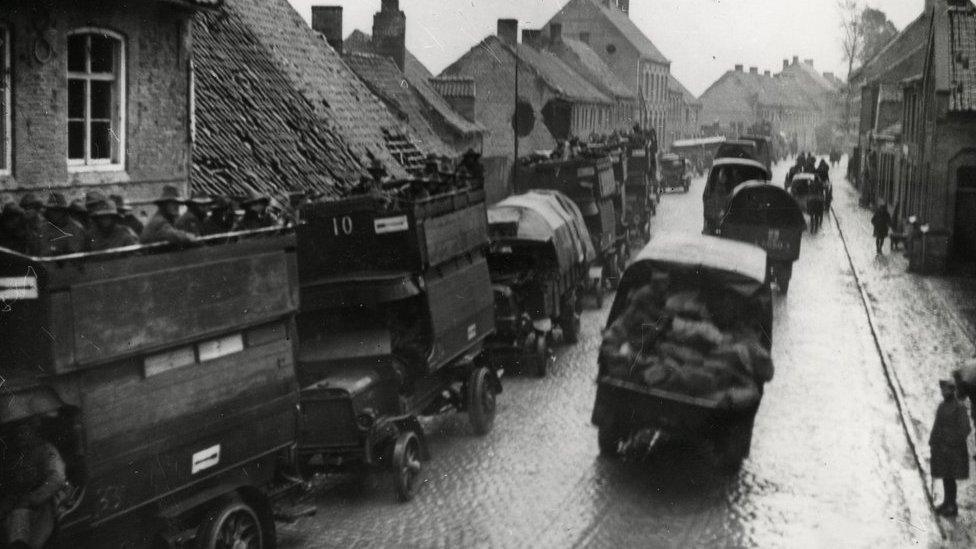
The buses tended to travel in convoy, each holding about 30 men and their equipment
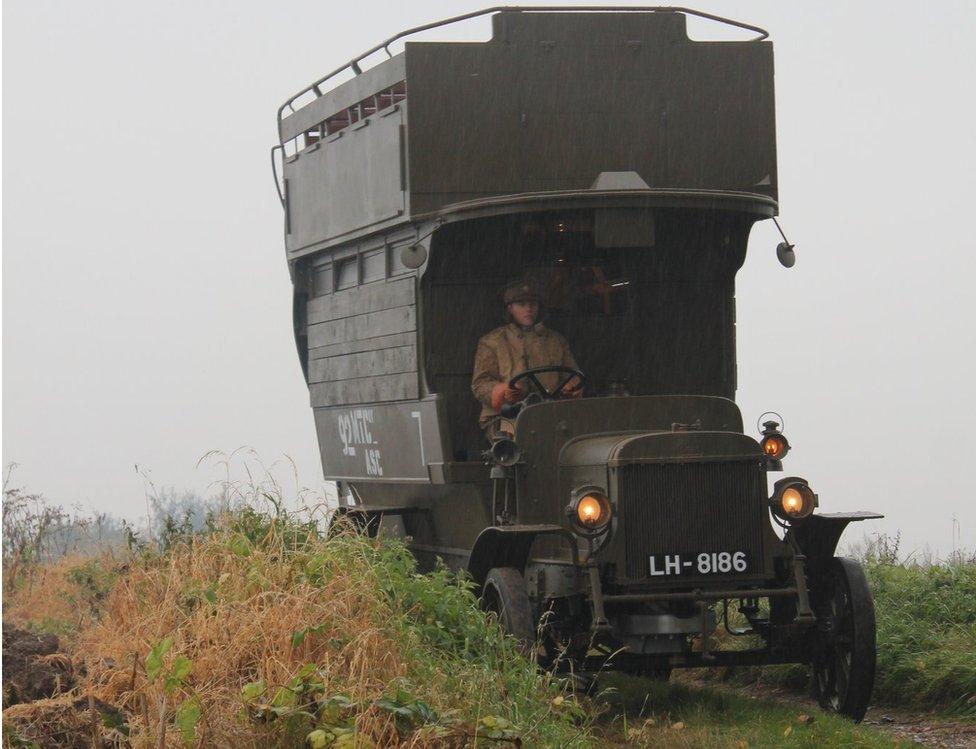
The London Transport Museum has restored an original B-type into a battle bus to be driven along the length of the Somme in commemoration of the transport workers who served in World War One

These buses are collecting men in the pouring rain at Boulogne in 1914
Pte George Gwynn was a driver sent to Ypres in Belgium with his bus. He gave a recorded interview, which can still be heard, external, to the Imperial War Museum in 1985, when he was 95, describing how the vehicle was his only shelter.
"I slept at the roadside on those buses, with no cover. We ate on board.
"Each night in the winter we had to get out of our beds and start the engine every two hours. We had to be ready at any time to rush out and pick troops up from their billets.
"We came under fire every night and think 'game over'. The driver of the bus in front of mine was killed. Every night we had something like that."
Pte Gwynne, whose job also entailed taking injured men to field hospitals, recalled driving past "fields full of men, they'd been gassed. All the men just lying on their backs".

The men have replaced the original London destination with "Berlin"

These men, photographed in October 1914, have been transported to Ghent in Belgium
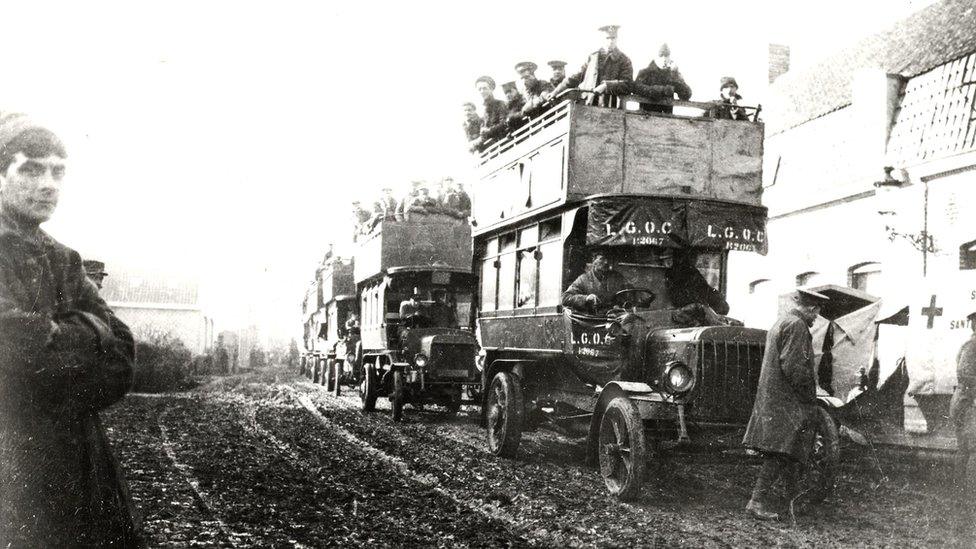
London buses on the Western Front in 1916. The drivers would eat and sleep on board
According to the London Transport Museum, this year's tour paid tribute to the transport workers who served during the war.
The bus - one of only two working 1914 B-types buses in the world - operated between Barnes and Liverpool Street and was transformed by the museum into a military troop carrier exactly like the ones that went to war.
It travelled along key locations from the battle, from Gommecourt in the north to Maricourt in the south.
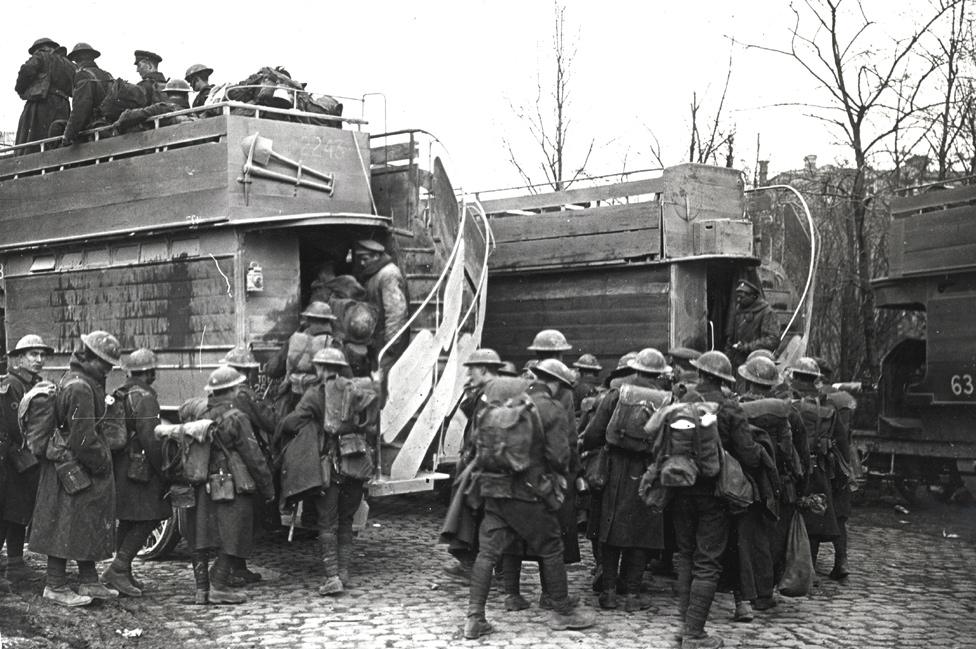
Some of the buses were fitted with spades and pickaxes (on the rear at the top of the steps). One driver remembered driving into a ditch and having to be dug out
Sam Mullins, director of the museum, said more than 1,000 London buses were requisitioned for war service - about one third of the London fleet - in many cases with their civilian drivers and mechanics.
Most vehicles went to France and Belgium, though some travelled as far as Greece.
The progress of the bus at the Somme, with information and photos, can be followed on Twitter, external.

The buses would work alongside traditional horses and carts as well foot soldiers

The Battle of the Somme
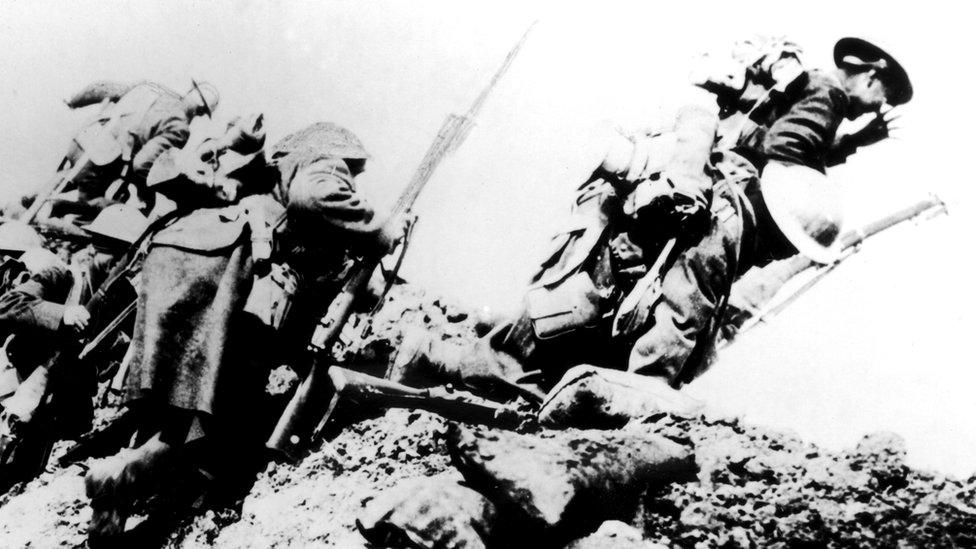
The Battle of the Somme
Began on 1 July 1916 and was fought along a 15-mile front near the River Somme in northern France
19,240 British soldiers died on the first day - the bloodiest day in the history of the British army
The British captured just three square miles of territory on the first day
At the end of hostilities, five months later, the British had advanced just seven miles and failed to break the German defence
In total, there were over a million dead and wounded on all sides, including 420,000 British, about 200,000 from France and an estimated 465,000 from Germany
Find out more:

- Published12 December 2013
